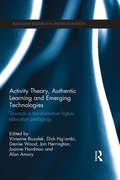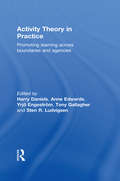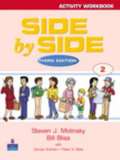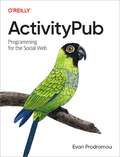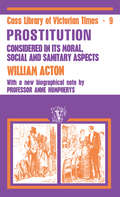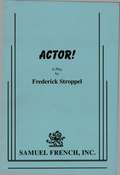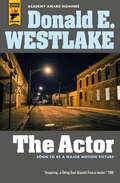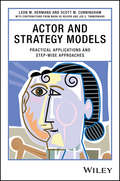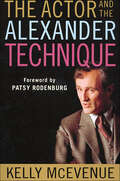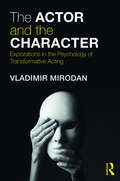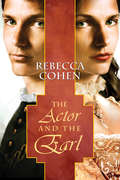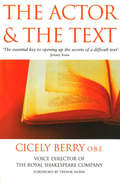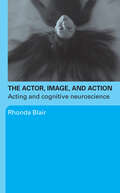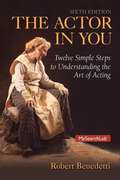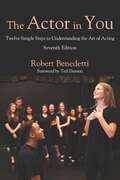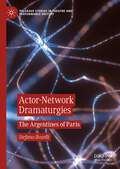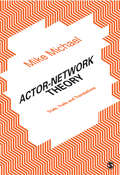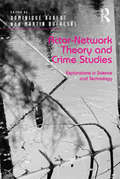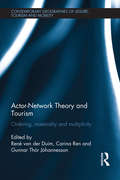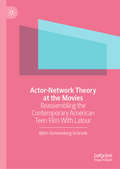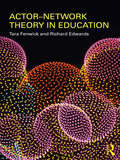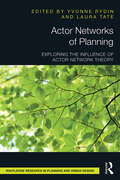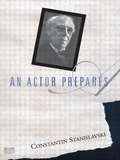- Table View
- List View
Activity Theory, Authentic Learning and Emerging Technologies: Towards a transformative higher education pedagogy (Routledge Research in Higher Education)
by Denise Wood Vivienne Bozalek Dick Ng’ambi Jan Herrington Joanne Hardman Alan AmoryAlthough emerging technologies are becoming popularised for teaching, learning and research, the relationship between their use and transformative effects on higher education remain largely unexplored. This edited collection seeks to fill this gap by providing a nuanced view, locating higher education pedagogical practices at an intersection of emerging technologies, authentic learning and activity systems. Providing numerous case studies as examples, the book draws from a wide range of contexts to illustrate how such a convergence has the potential to track transformative teaching and learning practices in the higher education sector. Chapters provide the reader with a variety of transformative higher education pedagogical practices in southern contexts, theorised within the framework of Cultural Historical Activity Theory (CHAT) and tool mediation, while using authentic learning as a pedagogical model upon which this theoretical framework is based. The topics covered in the book have global relevance, with research paying particular attention to South Africa, Australia and New Zealand, where the authors are based. The book will be of interest to educators, researchers and practitioners in higher education, as well as those interested in emerging technologies in education more generally.
Activity Theory in Practice: Promoting Learning Across Boundaries and Agencies
by Anne Edwards Harry Daniels Yrjö Engeström Tony Gallagher Sten R. LudvigsenThis ground-breaking book brings together cutting-edge researchers who study the transformation of practice through the enhancement and transformation of expertise. This is an important moment for such a contribution because expertise is in transition - moving toward collaboration in inter-organizational fields and continuous shaping of transformations. To understand and master this transition, powerful new conceptual tools are needed and are provided here. The theoretical framework which has shaped these studies is Cultural Historical Activity Theory (CHAT). CHAT analyses how people and organisations learn to do something new, and how both individuals and organisations change. The theoretical and methodological tools used have their origins in the work of Lev Vygotsky and A.N. Leont’ev. In recent years this body of work has aroused significant interest across the social sciences, management and communication studies. Working as part of an integrated international team, the authors identify specific findings which are of direct interest to the academic community, such as: the analysis of vertical learning between operational and strategic levels within complex organizations; the refinement of notions of identity and subject position within CHAT; the introduction of the concept of ‘labour power’ into CHAT; the development of a method of analysing discourse which theoretically coheres with CHAT and the design of projects. Activity Theory in Practice will be highly useful to practitioners, researchers, students and policy-makers who are interested in conceptual and empirical issues in all aspects of ‘activity-based’ research.
Activity Workbook: Side By Side Book 2 (Third Edition)
by Steven J. Molinsky Bill Bliss Carolyn Graham Peter S. BlissThe Side by Side Activity Workbooks offer a variety of exercises for reinforcement, fully coordinated with the student texts. A special feature of the Activity Workbooks is the inclusion of GrammarRaps for practice with rhythm, stress, and intonation and GrammarSongs from the Side by Side TV videos. Periodic check-up tests are also included in the workbooks. Side by Side Plus is a standards-based and grammar-based English language program for adult and young-adult learners, The program builds students’ general language proficiency and prepares them for their life-skill roles in the community, family, school, and at work.
ActivityPub: Programming for the Social Web
by Evan ProdromouActivityPub is the new standard for connecting social networks together on the social web. This open, decentralized social networking protocol defines an API for sharing activities to a social network and a procedure that servers use to distribute those activities to a subscriber's feed. With this book, you'll learn how to assemble ActivityPub-enabled clients for making new kinds of social apps on top of existing networks and build ActivityPub servers that create new human or automated accounts on the social web.With those skills under your belt, you can explore other applications of this publish-subscribe technology: content management systems, internet of things, and enterprise automation. With hands-on examples and in-depth knowledge from Evan Prodromou, one of the authors of the protocol, this is the ActivityPub handbook that every social software hacker needs.Learn what the social web is and what ActivityPub doesRepresent social network data in the Activity Streams 2.0 formatWrite a simple ActivityPub client and serverExtend ActivityPub's functionality with new typesFind in-depth details about the more obscure ActivityPub data structuresEvan Prodromou is a coauthor of the ActivityPub protocol and the Activity Streams 2.0 data format.
Acton: In London And Other Large Cities; With Proposals For The Mitigation And Prevention Of Its Attendant Evils (classic Reprint)
by William ActonPublished in the year 1972, Action: Prostitution Considered is a valuable contribution to the field of History.
Actor
by Frederick StroppelComedy / 3m, 2f / Bare stage with set pieces This comic odyssey charts the life and times of the title character as he makes his way through the show business jungle seeking fame and artistic fulfillment. As a baby he learns that crying brings nourishment and affection; crying too long and loud results in scolds and smacks. Armed with this lesson about the capricious nature of existence, he launches into his craft as a child playing a Wise Man at Christmas. Then it's on to the acting Mecca of New York and acting lessons, a job in children's theatre and the crushing rejection of auditions. He heads to Hollywood and finds success on television and stardom in movies, but his time at the top is fleeting. Throughout, the Actor encounters a bevy of curious characters who influence his journey through this unnatural world.
The Actor
by Donald E. WestlakeTHE ACTOR: NOW A MAJOR MOTION PICTURE STARRING ANDRE HOLLAND, GEMMA CHAN, TRACEY ULLMAN and TOBY JONESDonald E. Westlake's lost masterpiece MEMORY, adapted for the screen as THE ACTOR.&“An unsparing look at a man adrift, it's a fitting final dispatch from a master.&”—Time"Terse and bleak and low-key emotional… indelible."—Entertainment WeeklyTHE CRIME WAS OVER IN A MINUTE – THE CONSQUENCES LASTED A LIFETIMEHospitalized after a liaison with another man&’s wife ends in violence, Paul Cole has just one goal: to rebuild his shattered life. But with his memory damaged, the police hounding him, and no way even to get home, Paul&’s facing steep odds – and a bleak fate if he fails…This final, never-before-published novel by three-time Edgar Award winner Donald E. Westlake is a noir masterpiece, a dark and painful portrait of a man&’s struggle against merciless forces that threaten to strip him of his very identity.
Actor and Strategy Models: Practical Applications and Step-wise Approaches
by Leon M. Hermans Scott W. CunninghamA practical how-to guide for more effective planningthrough multi-actor modelling Careful planning is the cornerstone of a successful initiative, and any plan, policy, or business strategy can only be successful if it has the support of different actors. These actors may beactively pursuing their own agendas, so the plan must not only offer an optimal solution to theproblem, but must also fit the needs and abilities of the actors involved. Actor and Strategy Models: Practical Applications and Step-wise Approaches provides a primer on multi-actormodelling, based on the fundamental premise that actor strategies are explained by investigatingwhat actors can do, think, and want to achieve. Covering a variety of models with detailed background and case examples, this book focuses on practical application. Step-by-step instructions for each approach provide immediately actionable insight, while a general framework for actor and strategy modelling allows the reader to tailor any approach as needed to optimize results in terms of situation-specific planning. Oriented toward real-world strategy, this helpful resource: • Provides models that shed light on the multi-actor dimensions of planning, using a variety of analytical approaches • Includes literature, theoretical underpinnings, and applications for each method covered • Clarifies the similarities, differences, and suitable applications between various actor modelling approaches • Provides a step-wise framework for actor and strategy modelling • Offers guidance for the identification, structuring, and measuring of values and perceptions • Examines the challenges involved in analyzing actors and strategies Even before planning begins, an endeavor’s success depends upon a clear understanding of the various actors involved in the planning and implementation stages. From game theory and argumentative analysis, through social network analysis, cognitive mapping, and beyond,Actor and Strategy Models provides valuable insight for more effective planning. Leon M. Hermans is an assistant professor at the Faculty of Technology, Policy, and Management at Delft University of Technology. His research focuses on the use of actor analysis methods to support public policy analysis and evaluation. Scott W. Cunningham is an associate professor at the Faculty of Technology, Policy, and Management at Delft University of Technology. He combines work in actor modelling and game theory with research in data mining, technology forecasting, and innovation.
The Actor and the Alexander Technique
by Kelly McEvenueF.M. Alexander developed the Alexander Technique of movement in the early 20th century. Combining vocal clarity and body movement, Alexander developed a performance coaching method that is used by dancers, actors, singers, etc. In The Actor and the Alexander Technique, Kelly McEvenue writes the first basic book about how this unique technique can help actors feel more natural on the stage. She provides warm-up exercises, "balance" and "center" exercises, spatial awareness exercises. She talks about imitation, the use of masks, nudity on the stage, dealing with injury and aging. She talks about specific productions that have successfully used the Alexander Technique, such as "The Lion King". With a foreword by Patsy Rodenburg of our own phenomenal The Actor Speaks this is a book that belongs on the shelf of every working and studying actor.
The Actor and the Character: Explorations in the Psychology of Transformative Acting
by Vladimir MirodanTransformative acting remains the aspiration of many an emerging actor, and constitutes the achievement of some of the most acclaimed performances of our age: Daniel Day-Lewis as Lincoln, Meryl Streep as Mrs Thatcher, Anthony Hopkins as Hannibal Lecter – the list is extensive, and we all have our favourites. But what are the physical and psychological processes which enable actors to create characters so different from themselves? To understand this unique phenomenon, Vladimir Mirodan provides both a historical overview of the evolution of notions of 'character' in Western theatre and a stunning contemporary analysis of the theoretical implications of transformative acting. The Actor and the Character: Surveys the main debates surrounding the concept of dramatic character and – contrary to recent trends – explains why transformative actors conceive their characters as ‘independent’ of their own personalities. Describes some important techniques used by actors to construct their characters by physical means: work on objects, neutral and character masks, Laban movement analysis, Viewpoints, etc. Examines the psychology behind transformative acting from the perspectives of both psychoanalysis and scientific psychology and, based on recent developments in psychology, asks whether transformation is not just acting folklore but may actually entail temporary changes to the brain structures of the actors. The Actor and the Character speaks not only to academics and students studying actor training and acting theory, but contributes to current lively academic debates around character. This is a compelling and original exploration of the limits of acting theory and practice, psychology, and creative work, in which Mirodan boldly re-examines some of the fundamental assumptions of actor training and some basic tenets of theatre practice to ask: What happens when one of us ‘becomes somebody else’?
The Actor and the Earl (The Crofton Chronicles #1)
by Rebecca Cohen2nd EditionThe Crofton Chronicles: Book OneElizabethan actor Sebastian Hewel takes his bow at the proscenium only to embark on the role of a lifetime. When his twin sister, Bronwyn, reneges on the arrangement to marry Anthony Redbourn, Earl of Crofton, Sebastian reluctantly takes her place. At nineteen, Sebastian knows his days as a leading lady are numbered, but with this last performance, he hopes to restore his family's name and pay off his late father's debts. Never mind the danger of losing his head should he be discovered. He didn't expect Anthony to be so charming and alluring--not to mention shrewd. While he applauds Sebastian's plan, Anthony offers a mutually beneficial arrangement instead. Sebastian will need every drop of talent he has to survive with both his head and his heart intact, because this is the best part he's ever had.A Timeless Dreams title: While reaction to same-sex relationships throughout time and across cultures has not always been positive, these stories celebrate M/M love in a manner that may address, minimize, or ignore historical stigma.1st edition published by Dreamspinner Press, November 2012. Winner in the 2013 Rainbow Awards.Sixth: Best LGBT Cover - Illustration
The Actor and the Text
by Cicely BerryThe Actor and His Text is a direct extension of Cicely Berry's first book, Voice and the Actor. It sets out to apply the methods of voice production directly and practically to the speaking of text. Specifically, it addresses the problem of how to infuse life and meaning into words that are first encountered on the printed page. While the greater part of her book is about the speaking of Shakespeare, Cicely Berry also includes the speaking of modern plays, such as those of Davis Rudkin and Edward Bond. She expands, too, on the exercises given in Voice and the Actor which help to develop relaxation, breathing and muscular control.
The Actor And The Text
by Cicely BerryCicely Berry, Voice Director of the Royal Shakespeare Company, is world-famous for her voice teaching. The Actor and the Text is her classic book, distilled from years of working with actors of the highest calibre.
The Actor, Image, and Action: Acting and Cognitive Neuroscience
by Rhonda BlairThe Actor, Image and Action is a 'new generation' approach to the craft of acting; the first full-length study of actor training using the insights of cognitive neuroscience. In a brilliant reassessment of both the practice and theory of acting, Rhonda Blair examines the physiological relationship between bodily action and emotional experience. In doing so she provides the latest step in Stanislavsky's attempts to help the actor 'reach the unconscious by conscious means'. Recent developments in scientific thinking about the connections between biology and cognition require new ways of understanding many elements of human activity, including: imagination emotion memory physicality reason. The Actor, Image and Action looks at how these are in fact inseparable in the brain's structure and function, and their crucial importance to an actor’s engagement with a role. The book vastly improves our understanding of the actor's process and is a must for any actor or student of acting.
The Actor In You: Twelve Simple Steps To Understanding The Art Of Acting (Sixth Edition)
by Robert BenedettiThe Actor in You presents a thorough and systematic exposure to the fundamentals of the acting process in simple, direct language and a streamlined structure. This title draws on exercises and examples from students’ everyday lives, well-known plays, and popular television programs to lead the beginning student through the process of creating a role. MySearchLab is a part of the Benedetti program. Research and writing tools, including access to academic journals, help students understand critical thinking in even greater depth. To provide students with flexibility, students can download the eText to a tablet using the free Pearson eText app.
The Actor in You: Twelve Simple Steps to Understanding the Art of Acting
by Robert BenedettiSince the first edition of The Actor in You was published a quarter-century ago, thousands of students have benefited from Robert Benedetti's decades of experience educating some of the United States' finest actors. In this Seventh Edition, Benedetti expresses the fundamental elements of acting in simple language, leading readers through understanding their own bodies and voices, acting technique, and the basics of rehearsals and staging shows. Each step includes exercises to aid students in self-discovery and self-development as they grow from novices into practiced actors. Titles by Robert Benedetti also available from Waveland Press: Action!: Professional Acting for Film and Television, Second Edition (ISBN 9781478649397) and The Actor at Work, Eleventh Edition (ISBN 9781478649045).
Actor-Network Dramaturgies: The Argentines of Paris (Palgrave Studies in Theatre and Performance History)
by Stefano BoselliThis book provides key critical tools to significantly broaden the readers’ perception of theatre and performance history: in line with posthuman thought, each chapter engages Actor-Network Theory and similar theories to reveal a comprehensive range of human and non-human agents whose collaborations impact theatre productions but are often overlooked. The volume also greatly expands the information available in English on the networks created by several Argentine artists. Through a transnational, transatlantic perspective, case studies refer to the lives, theatre companies, staged productions, and visual artworks of a number of artists who left Buenos Aires during the 1960s due to a mix of personal and political reasons. By establishing themselves in the French capital, queer playwright Copi and directors Jorge Lavelli, Alfredo Arias, and Jérôme Savary, among others, became part of the larger group of intellectuals known as “the Argentines of Paris” and dominated the Parisian theatre scene between the 1980s and 90s. Focusing on these Argentine artists and their nomadic peripeteias, the study thus offers a detailed description of the complexity of agencies and assemblages inextricably involved in theatre productions, including larger historical events, everyday objects, sexual orientation, microbes, and even those agents at work well before a production is conceived.
Actor-Network Theory: Trials, Trails and Translations
by Mike MichaelIn this thought-provoking and engaging book, Mike Michael brings us a powerful overview of Actor-Network Theory. Covering a breadth of topics, Michael demonstrates how ANT has become a major theoretical framework, influencing scholarly work across a range of fields. Critical and playful, this book fills a notable gap in the literature as Michael expertly explicates the theory and demonstrates how its key concepts can be applied. Comparing and contrasting ANT with other social scientific perspectives, Michael provides a robust and reflexive account of its analytic and empirical promise. A perfect companion for any student of Science and Technology Studies, Sociology, Geography, Management & Organisation Studies, Media & Communication, and Cultural Studies.
Actor-Network Theory: Trials, Trails and Translations
by Mike MichaelIn this thought-provoking and engaging book, Mike Michael brings us a powerful overview of Actor-Network Theory. Covering a breadth of topics, Michael demonstrates how ANT has become a major theoretical framework, influencing scholarly work across a range of fields. Critical and playful, this book fills a notable gap in the literature as Michael expertly explicates the theory and demonstrates how its key concepts can be applied. Comparing and contrasting ANT with other social scientific perspectives, Michael provides a robust and reflexive account of its analytic and empirical promise. A perfect companion for any student of Science and Technology Studies, Sociology, Geography, Management & Organisation Studies, Media & Communication, and Cultural Studies.
Actor-Network Theory and Crime Studies: Explorations in Science and Technology
by Dominique Robert Martin DufresneDeveloped by Bruno Latour and his collaborators, actor-network theory (ANT) offers crimes studies a worthy intellectual challenge. It requires us to take the performativity turn, consider the role of objects in our analysis and conceptualize all actants (human and non-human) as relational beings. Thus power is not the property of one party, but rather it is an effect of the relationships among actants. This innovative collection provides a series of empirical and theoretical contributions that shows: ¢ The importance of conceptualizing and analyzing technologies as crucial actants in crime and crime control. ¢ The many facets of ANT: its various uses, its theoretical blending with other approaches, its methodological implications for the field. ¢ The fruitfulness of ANT for studying technologies and crime studies: its potential and limitations for understanding the world and revamping crime studies research goals. Students, academics and policy-makers will benefit from reading this collection in order to explore criminology-related topics in a different way.
Actor-Network Theory and Tourism: Ordering, Materiality and Multiplicity (Contemporary Geographies of Leisure, Tourism and Mobility)
by René van der Duim Carina Ren Gunnar Thór JóhannessonThe recent surfacing of actor-network theory (ANT) in tourism studies correlates to a rising interest in understanding tourism as emergent thorough relational practice connecting cultures, natures and technologies in multifarious ways. Despite the widespread application of ANT across the social sciences, no book has dealt with the practical and theoretical implications of using ANT in Tourism research. This is the first book to critically engage with the use of ANT in tourism studies. By doing so, it challenges approaches that have dominated the literature for the last twenty years and casts new light on issues of materiality, ordering and networks in tourism. The book describes the approach, its possibilities and limitations as an ontology and research methodology, and advances its use and research in the field of tourism.The first three chapters of the book introduce ANT and its key conceptual premises, the book itself and the relation between ANT and tourism studies. Using illustrative cases and examples, the subsequent chapters deal with specific subject areas like materiality, risk, mobilities and ordering and show how ANT contributes to tourism studies. This part presents examples and cases which illustrate the use of the approach in a critical way. Inherently, the study of tourism is a multi-disciplinary field of research and that is reflected in the diverse academic backgrounds of the contributing authors to provide a broad post-disciplinary context of ANT in tourism studies. This unique book, focusing on emerging approaches in tourism research, will be of value to students, researchers and academics in tourism as well as the wider Social Sciences.
Actor-Network Theory at the Movies: Reassembling the Contemporary American Teen Film With Latour
by Björn Sonnenberg-SchrankThis book is one of the first to apply the theoretical tools proposed by French philosopher Bruno Latour to film studies. Through the example of the Hollywood Teen Film and with a particular focus on Actor-Network Theory (ANT), the book delineates how Teen Film has established itself as one of Hollywood’s most consistent and dynamic genres. While many productions may recycle formulaic patterns, there is also a proliferation of cinematic coming-of-age narratives that are aesthetically and politically progressive, experimental, and complex. The case studies develop a Latourian film semiotics as a flexible analytical approach which raises new questions, not only about the history, types and tropes of teen films, but also about their aesthetics, mediality, and composition. Through an exploration of a wide and diverse range of examples from the past decade, including films by female and African-American directors, urban and rural perspectives, and non-heteronormative sexualities, Actor-Network Theory at the Movies demonstrates how the classic Teen Film canon has been regurgitated, expanded, and renewed.
Actor-Network Theory in Education (Education And Social Theory Ser.)
by Tara Fenwick Richard EdwardsActor-Network Theory (ANT) has enjoyed wide uptake in the social sciences in the past three decades, particularly in science and technology studies, and is increasingly attracting the attention of educational researchers. ANT studies bring to the fore the material – objects of all kinds – and de-centre the human and the social in educational issues. ANT sensibilities are interested in the ways human and non-human elements become interwoven. Since its first introduction, actor-network theory has undergone significant shifts and evolutions and as a result, it is not considered to be a single or coherent theoretical domain, but as developing diversely in response to various challenges. This book offers an introduction to Actor-Network Theory for educators to consider in three ways. One mode is the introduction of concepts, approaches and debates around Actor-Network Theory as a research approach in education. A second mode showcases educational studies that have employed ANT approaches in classrooms, workplaces and community settings, drawn from the UK, USA, Canada, Europe and Australia. These demonstrate how ANT can operate in highly diverse ways whether it focuses on policy critique, curriculum inquiry, engagements with digital media, change and innovation, issues of accountability, or exploring how knowledge unfolds and becomes materialized in various settings. A third mode looks at recent 'after-ANT' inquiries which open an array of important new approaches. Across these diverse environments and uptakes, the authors trace how learning and practice emerge, show what scales are at play, and demonstrate what this means for educational possibilities.
Actor Networks of Planning: Exploring the Influence of Actor Network Theory
by Yvonne Rydin Laura TatePlanning is centrally focused on places which are significant to people, including both the built and natural environments. In making changes to these places, planning outcomes inevitably benefit some and disadvantage others. It is perhaps surprising that Actor Network Theory (ANT) has only recently been considered as an appropriate lens through which to understand planning practice. This book brings together an international range of contributors to explore such potential of ANT in more detail. While it can be thought of as a subset of complexity theory, given its appreciation for non-linear processes and responses, ANT has its roots in the sociology of scientific and technology studies. ANT now comprises a rich set of concepts that can be applied in research, theoretical and empirical. It is a relational approach that posits a radical symmetry between social and material actors (or actants). It suggests the importance of dynamic processes by which networks of relationships become formed, shift and have effect. And while not inherently normative, ANT has the potential to strengthen other more normative domains of planning theory through its unique analytical lens. However, this requires theoretical and empirical work and the papers in this volume undertake such work. This is the first volume to provide a full consideration of how ANT can contribute to planning studies, and suggests a research agenda for conceptual development and empirical application of the theory.
An Actor Prepares
by Constantin StanislavskiThe first volume of Stanislavski's enduring trilogy on the art of acting defines the "System", a means of mastering the craft of acting and of stimulating the actor's individual creativeness and imagination.
